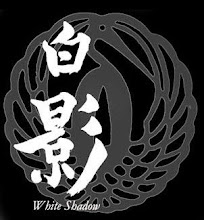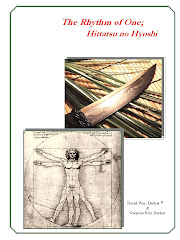Saturday, March 26, 2011
Blocking With the Blade
I did some editing of this and hopefully it reads better now! I had grabbed an older unedited version by mistake. Blocking With the Blade: Part One This and next week's posting are taken from my coming book "When Two Tigers Fight." Unless you can expertly perform rhythm-of-one-techniques (block-strike in one move) you should always block with your knife blade, not your empty-hand or arm! I have said it before but it is worth repeating, always apply steel against flesh, not vice versa. That sounds simple enough in theory but it is not as easy in the heat of practice or a fight. Let us consider three basic zones for blocking or attacking. 1)Upper, top of the head to the solar plexus. 2)Middle, the solar plexus to the crotch 3)Lower, the crotch to the feet Learning how to block with your knife is essential, but those of you who have trained in an empty-hand martial art you may find it unnatural and difficult at first. If you are performing solo drills with a live blade you must practice the blocks very carefully to prevent cutting yourself. It might sound stupid but now your one arm is longer than the other by the length of your knife blade. When working with a partner always wear the appropriate protective gear and use blunted blades (not taped up live blades) to prevent injury to the hands or tendons of the forearm wear arm guards at least on your knife arm. When using double-edged blades for blocking, absolute concentration and coordination are necessary, they literally cut both ways. S0 pay attention and stay focused! The biggest difficulty in blocking with the knife is determining in a split second whether your blade should be positioned tip up or tip down to intercept the incoming attack. If you are using reverse grip it will always be oriented tip down. The difference is critical and dependent upon your height, and the height and angle of the incoming attack. Don't forget that you can change your body height by rising up or dropping down at the knees. With the advanced practitioner, the blocks might not rely totally on the steel blade. If you are using a small folder for instance, you might find yourself blocking with your hand and/or forearm as an extension of your blade against your attacker’s arm (not his knife). Here's a hint, research the fencing term "glissade." Thinking “blocking with the blade,” rather than with your empty-hand/arm, will help you improve your blade/arm positioning. The last thing you want to have happen is to throw a picture-perfect block with a too short blade and find the attacker’s knife whizzing right past your block and lodging in your throat, stomach, or leg. There are several basic rules when using your knife for blocking. These rules also change depending on the grip you are using. If you are holding your knife in any of the blade-forward grips, and your attacker targets: 1) Your upper zone, block with your knife positioned tip up. At times you may use tip down in the upper zone. 2) Your lower zone, block with your knife positioned tip down Next post we will look at reverse grip and the middle zones for blocking. Til then play safe and practice blocking with your blade, steel on steel, or steel against flesh.
Subscribe to:
Post Comments (Atom)






No comments:
Post a Comment